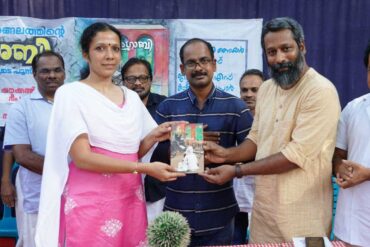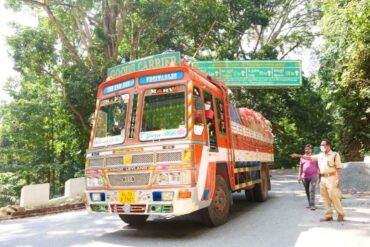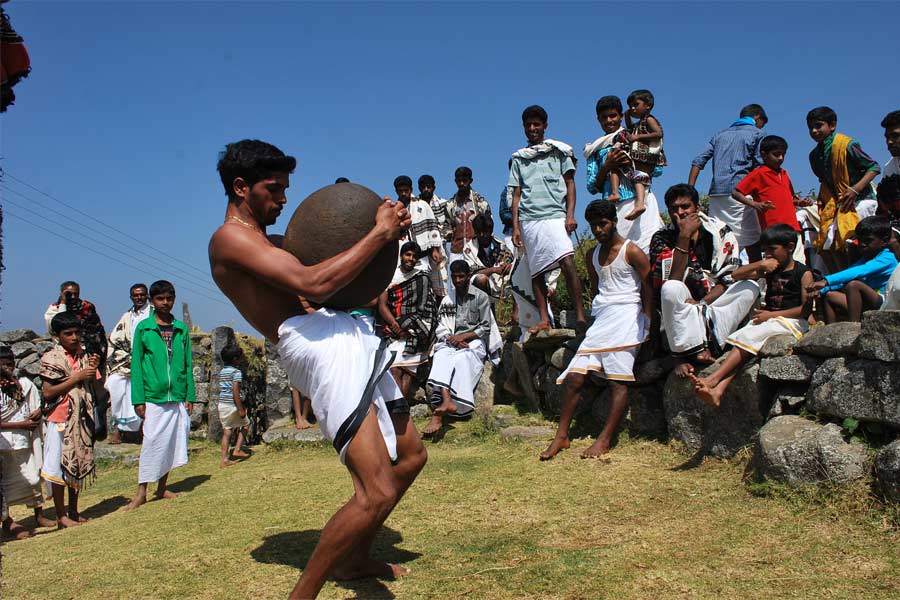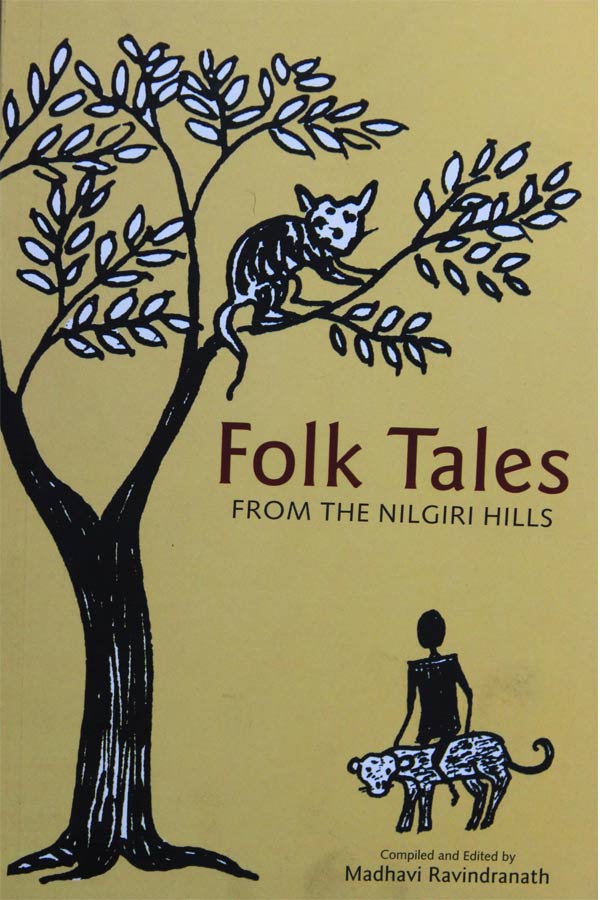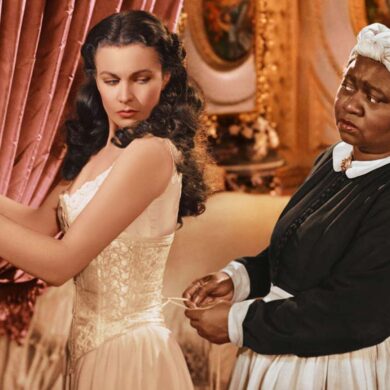A mother and her toddler were alone in their little hut in the mountains. As the child played happily outside, the mother went about her chores, pounding millets and chopping greens for the evening meal. Her husband would return, to have the meal, bringing back their buffalo herd.
Suddenly the mother heard an unfamiliar sound and peeked outside the door to check on her baby. To her horror, she saw a tiger basking in the sun, right outside the house. The little boy had happily crawled over and climbed onto its back.
For a moment she did not know what to do, for if she made a noise or attacked the tiger, she was sure, her son would be killed. She went back inside and crushing the greens she had been cutting, put them into a dish and poured some honey over it. She pushed the plate out of the door to where the child could see it.
Seeing his favorite food, honey, glistening golden on the plate, the child clambered down and toddled towards it. As soon as the child was within reach, the mother grabbed him and pulling him inside, shut the door.
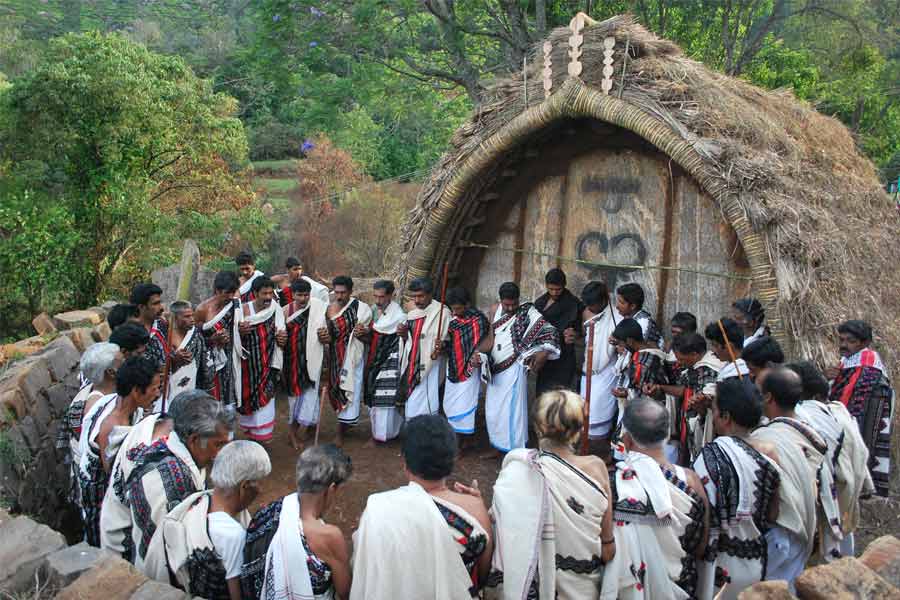
The story mentioned above is part of the treasure-trove of oral folktales circulated from generation to generation by the Toda tribal community of the Nilgiris in Tamil Nadu. This pastoral tribal community that worships buffaloes can be seen only in the Nilgiris and, their population is now below 2000.
Simple and straightforward, the Toda folk tales are reflective of the intrinsic relationship between the tribal community and surrounding forest environs. Among the hilly regions of Tamil Nadu, the Nilgiris has a rich tribal tradition and plenty of oral folktales.
Apart from the Todas, other tribal groups like Irulas, Paniyas, Mullukurumbas, Alukurumbas, Bettakurumbas, Kotas and Kattunayakas claim the Nilgiris as their home from beyond history. They all have diverse and rich folk traditions.

The diversity of the Nilgiris’ tribal traditions ensures a wide and complex range of tales. Folktales exercise a powerful influence over the tribal popular imagination, with folk heroes often being deified in their villages.
It was in this backdrop, the All India Radio (AIR)’s programme head Madhavi Ravindranath began a rare initiative a few years ago to document the tribal folk tales of the Nilgiri hills. A known radio professional with proven dedication to rural life and its richness, Madhavi began her unique effort soon after she was posted at the radio station in Udhagamandalam, the headquarters of the Nilgiris district.
“It was eight years ago, I started recording the folk tales from the older people of the main tribal communities in the Nilgiris. It was, in fact, a humble effort to reach out to the masses here. The AIR station broadcast these stories as a series with the title ‘Malai Makkal Maanaadu’ (Gathering of the hill people).”
“A severe cultural degradation is now happening in many tribal communities of Nilgiris. So I wanted to document these stories before they are lost forever. I found that it was necessary to preserve them as they have not been documented anywhere,”said Madhavi, in an interaction.
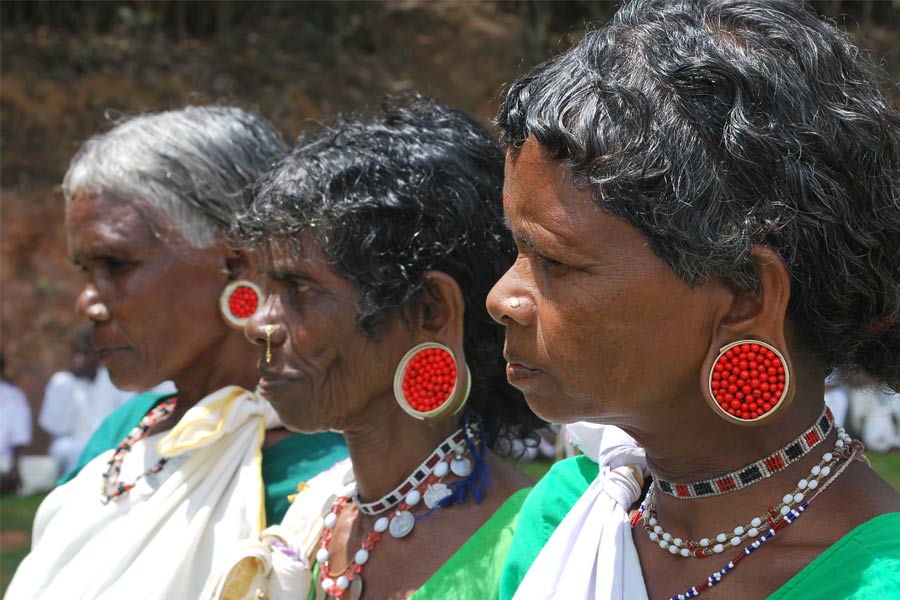
The programme was in Tamil and it became an instant hit even among the non-tribals of the region. Soon, it was her ambition to give the stories a book form, after translating them to English.
Now, over 300 tribal folk stories have been converted into a book, and they are available for researchers and readers interested in tribal culture. The government of Tamil Nadu’s Hill Area Development Programme has undertaken the publishing initiative. Tribal illustrator R Krishnakitna has done all illustrations for the stories. This 224-page book produced in quality paper remains a solid contribution to the future researches on tribal life in Nilgiris.
“This is a classic example of how the All India Radio can contribute to nation building. When the concept of radio is passing through several complexities, the Nilgiris model with focus on its tribal life is worth emulating,” said Hill Area Development Programme’s project director Srinivasa R Reddy.
“It is a powerful documentation of the ethnic composition of the Nilgiris. Here every bead of the necklace is valuable. The Udhagamandalam AIR station proved its relevance,”said Jawhar Sircar, former chief executive officer of the Prasar Bharathi.
“The Nilgiri tribals have amazing variety of languages and customs despite living in the same hills. But they all are in a close relationship with surrounding forest environments. They have a spiritual link with the surrounding mountains, rivers and even the rocks,” said Madhavi when asked about her experiences from the hills. “The simplicity with which they live and the easy way they find answers to complex life realities can be seen reflected in these stories,” she added.
Among the stories from different communities, some are similar. But the narratives remain different. “Extreme care was taken to avoid distortion during recording for broadcast, transcription, selection, translation and editing,” she said.
“It is an effort to counter the cultural disintegration happening among our tribals. Because of the increasing interaction with the outer world, their folk arts and cultures are getting eroded. They are now forced to settle in alien lands, divorced from their traditional lifestyle. Alcoholism also contributes to the death of tribal stories and songs,” said Madhavi.
“The primary aim of the book is to showcase the comic, tragic and sometimes magical tales of this beautiful corner of the world,” she said
“The book will be a powerful reference material for scholars in anthropology, linguistics, tribal studies and folklore. It would give insight into the life, livelihood, culture and world view of the tribespeople of Nilgiris,” says Dr C R Sathyanarayanan, former director of Tribal Research Centre, Palada, Udhagamandalam.
“Folk stories always contain a moral lesson. In other words, they teach us an important lesson about human nature and harmony with nature. It is the moral lessons contained in the folk stories that make people live through the centuries, remind people of their roots and link them to their past,” he said.
Pics: V Mathimaran

